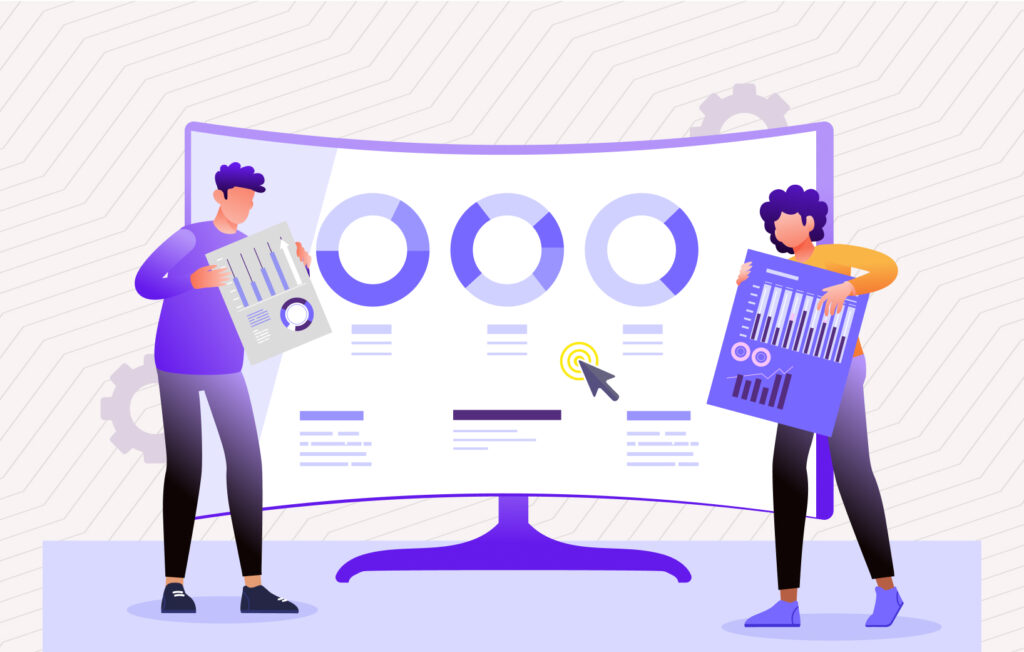Personalization has evolved beyond being a mere trend in product design. It is now a necessity for businesses to engage users seamlessly and improve the overall user experience through intuitive design to build brand loyalty among the audience. Successful personalization strategies help brands deliver personalized customer experiences by leveraging the user data accumulated through existing user sessions. These strategies are crucial in creating connections between users and the products or services designed by organizations, to foster customer satisfaction.
So, in this blog, we explore how personalization can transcend fundamental applications by diving deep into a few techniques that can help you unlock the power of personalization.
Stuti Mazumdar - January 2025

The Role of Personalization in Modern User Experiences
Personalization is the art of tailoring digital experiences to meet the unique requirements, preferences, and behaviors of each individual user approaching your digital product. It extends to customizable user interfaces, personalized content or product recommendations, and dynamic user journeys crafted in real-time with every session.
With the consistent surge in customer data availability, businesses can now analyze purchase histories, user demographics and profiles, and on-platform behavior to craft highly specific journeys and interactions that can not only make their experiences seamless but also allow organizations to accomplish their business goals. Truly a win-win for all involved!
With that, let’s breeze through some proven personalization strategies used across industries.
1. Leverage Qualitative Data to Understand User Behavior

The cornerstone of personalization lies in analyzing user data to predict user preferences and anticipate needs. In some cases, it may also help to administer FOMO in users to power their purchase decisions towards a bigger cart value. This data is often collected in the form of heatmaps through a product, platform, or website; session durations; purchase history and behavior; and more. Advanced data analytics tools are designed to collect such information (with user consent) and process the vast amounts of data, providing actionable insights into user behavior and habits.
Some best practices to follow:
- Analyze in Real-Time: Behaviors such as time spent on pages, clicks, and scroll depth are best analyzed in real-time since they can lead to dynamic content and recommendations across the product.
- Predict Preferences: Use machine learning algorithms to predict future preferences based on users’ purchase history, purchase trends, and browsing data.
- Segment Audiences: Based on shared characteristics like location, device, or interests segment the audience into cohorts to strategize for and orchestrate targeted experiences.
2. Craft Dynamic Content Across Every User Journey
Tailored messaging, recommendations, and offers are more effective than one-size-fits-all campaigns. Not only does it help users feel more connected to the brand based on their great experience, but also feel a sense of brand loyalty owing to the personalized treatment they receive at the convenience of an online experience.
Dynamic content adapts in real-time to user interactions and decisions, delivering messages and pushing content that resonates at every step of their journey.
Some best practices to follow:
- Use Behavioral Triggers: Capture users’ decisions across journeys to send personalized content. For instance, in case of consistent use of a SaaS product feature, suggest creating a shortcut or sending reminders for abandoned carts.
- Incorporate Dynamic Marketing Segments: Promotional banners are often a blindspot due to their nature, but adjusting them based on user interests can help garner more attention.
- Personalize Messaging: Personalize things as trivial as push notifications to as invasive as promotional emails in users’ inboxes through subject lines and recommendations by referring to previous actions.
3. Create Predictive Models for Personalized Recommendations
Predictive personalization uses historical and behavioral data to suggest products or services users might need. Utilizing such predictive personalization abilities within your digital product can help with cross-selling, utilization of product features, and improving operational efficiency (in the case of SaaS products).
- Identify Frequently Co-Purchased Items: Group them in recommendations to increase upselling. This is widely followed by eCommerce conglomerates like Amazon and Flipkart.
- Include Social Proof: Use “people also viewed” to drive cross-selling.
- Create Tailored Search Results: Based on prior user behavior and preferences, predictive text can be used to mimic their writing style and commonly used keywords.
4. Personalizing User Interfaces for a Seamless Experience
While personalized recommendations and content are vital, allowing users to customize their own experience is crucial. The user interface (UI) of the product should look like it belongs to them to ensure seamless interaction. Allowing them to customize UI elements based on user preferences and accessibility needs can greatly enhance usability and improve retention rates.
Some best practices to follow:
- Customizing Product Skin: Allow users to customize themes, layouts, or language preferences and then mimic the settings across all aspects of the experience; perhaps, even off-product ones.
- Implement Geo-Targeting Recommendations: Display location-specific options like currencies, delivery options, “centers near you”, etc.
Balancing Data Use with Privacy in Personalization

When accessing user data, clearly communicate how the data will be stored and used to deliver personalized content. To stay transparent about your data collection policy, allow users to control their data preferences, such as opting out of cookies, personalized recommendations, etc. This provides users with autonomy or control over their own privacy, further instilling brand loyalty.
The next frontier of personalization lies in hyper-personalized experiences powered by advancements in AI, augmented reality (AR), and the Internet of Things (IoT). With emerging trends, such as voice-based personalization, AR-integrated immersive personalized experiences, and more, we’re soon to experience digital products with tech to enhance the human connection between users and brands.



